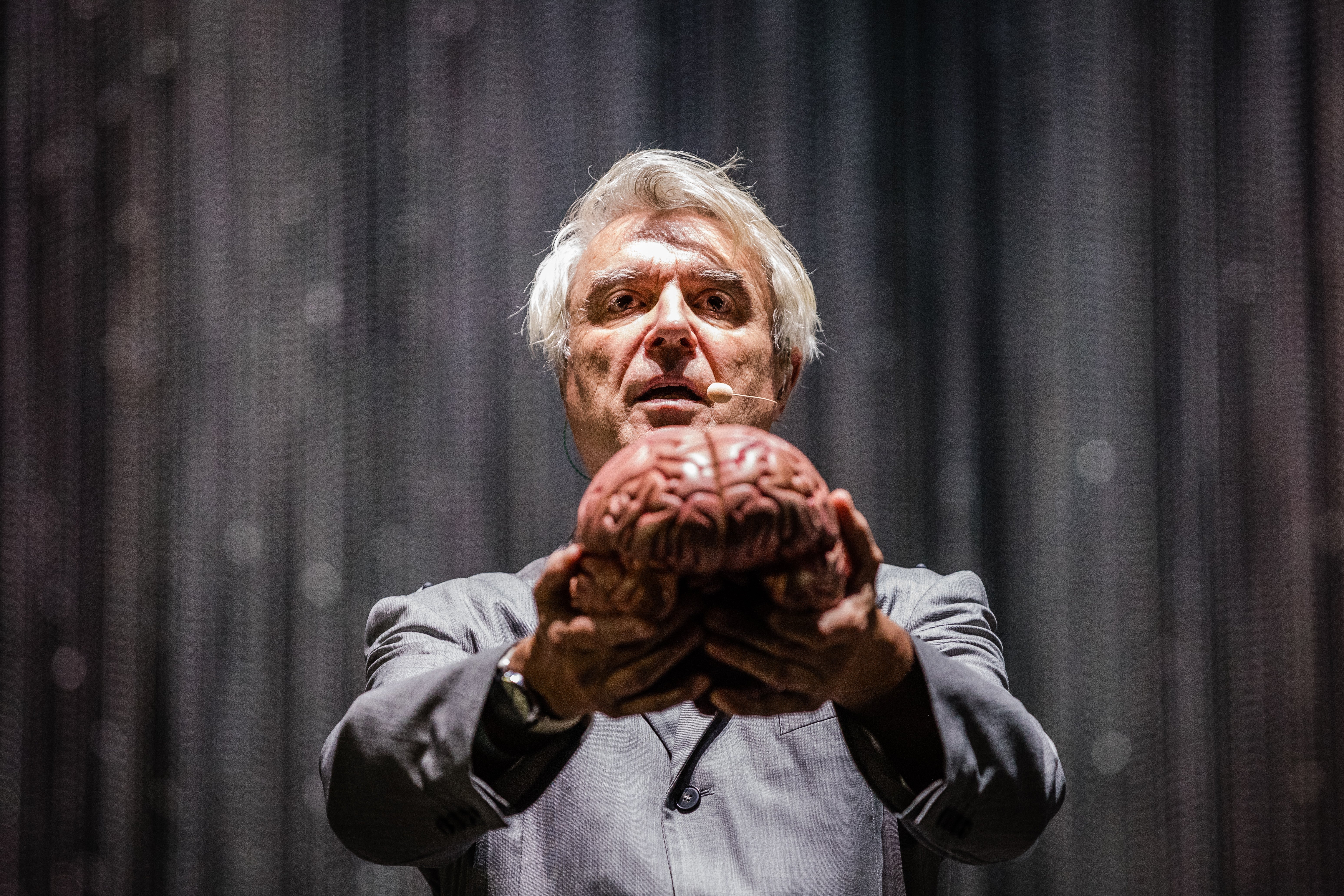The 16 moments that have defined David Byrne’s career: From Stop Making Sense to American Utopia
As the former Talking Heads frontman celebrates his 69th birthday, Kevin E G Perry looks back at key moments from the groundbreaking musician’s life and work


Your support helps us to tell the story
From reproductive rights to climate change to Big Tech, The Independent is on the ground when the story is developing. Whether it's investigating the financials of Elon Musk's pro-Trump PAC or producing our latest documentary, 'The A Word', which shines a light on the American women fighting for reproductive rights, we know how important it is to parse out the facts from the messaging.
At such a critical moment in US history, we need reporters on the ground. Your donation allows us to keep sending journalists to speak to both sides of the story.
The Independent is trusted by Americans across the entire political spectrum. And unlike many other quality news outlets, we choose not to lock Americans out of our reporting and analysis with paywalls. We believe quality journalism should be available to everyone, paid for by those who can afford it.
Your support makes all the difference.Singer, songwriter, leader of Talking Heads and sharp-dressed owner of the biggest suits in the business, David Byrne is 69 today. As the ceaselessly innovative musician celebrates the nicest of birthdays, we thought we’d take the opportunity to look back through his long career at the moments that made him:
1. An early revelation
Byrne was born in Dumbarton, Scotland, but grew up in Canada and the United States. His musical career began at high school in Maryland, where shortly after picking up a guitar for the first time he formed a covers band called Revelation. “I think we did a couple of Beatles songs, Rolling Stones songs, ‘You Really Got Me,’ stuff like that,” Byrne told Rolling Stone in 1983.
2. Coming to a-Heads
In 1973, aged 21, Byrne formed a band called the Artistics with Chris Frantz, a drummer he knew because they’d both studied at the Rhode Island School of Design. After the band split, Byrne moved to New York and when Frantz followed suit they decided to form a new band, with Frantz’s girlfriend Tina Weymouth encouraged to learn bass. On 5 June 1975, their new group Talking Heads played their first ever gig: opening for the Ramones at legendary East Village punk club CBGB.
3. A killer tune
Talking Heads released their debut album Talking Heads: 77 on 16 September 1977, and it spawned the band’s first hit single “Psycho Killer”. Given its title and content the song immediately became linked in popular culture with David Berkowitz, the ‘Son of Sam’ serial killer who had been arrested in New York in August 1977, but the timing was an eerie coincidence. Byrne wrote the lyrics years earlier and performed it with the Artistics as early as 1974.
4. Eno’s influence
In 1978, Byrne worked with producer and former Roxy Music member Brian Eno for the first time on Talking Heads’ album More Songs About Buildings and Food. It was the start of a long and productive series of collaborations between the pair. As well as producing the next two Talking Heads records, Fear of Music and Remain In Light, Eno also worked with Byrne on the singer’s debut solo album My Life in the Bush of Ghosts in 1981 and more recently Everything That Happens Will Happen Today in 2008.
5. On the run
Byrne achieved the breathless vocal effect on Fear of Music closing track “Drugs” by jogging on the spot while he sang.
6. Television Man
Wearing a suit, bowtie and glasses while dancing spasmodically, Byrne became a music video star with the release of “Once in a Lifetime” in 1981. Choreographed by “Mickey” singer Toni Basil in collaboration with Byrne, the pair were inspired by preachers, religious sects and people dancing in trances. The video was an early hit on MTV, which launched that same year.
7. Cracking the charts
“Watch out, you might get what you’re after…” Talking Heads earned their first – and only – top ten single on the US charts with the release of “Burning Down the House” in 1983.
8. Tailor-made for success
Filmed in 1984 at Hollywood’s Pantages Theater, the Talking Heads concert film Stop Making Sense was directed by The Silence of the Lambs’ Jonathan Demme and is now widely considered one of the greatest music films ever made. For the song “Girlfriend Is Better”, Byrne wears an absurdly oversized white suit – an instantly iconic look which has been parodied and referenced ever since. During a recent appearance on The Late Show with Stephen Colbert, Byrne appeared in a fake ad for ‘David Byrne’s Giant Suit Emporium’.
Enjoy unlimited access to 100 million ad-free songs and podcasts with Amazon Music
Sign up now for a 4 month free trial (3 months for non-Prime members)
Enjoy unlimited access to 100 million ad-free songs and podcasts with Amazon Music
Sign up now for a 4 month free trial (3 months for non-Prime members)
9. Taking the director’s chair
Following the acclaim for Stop Making Sense, Byrne wrote, directed and starred in a satirical musical comedy called True Stories in 1986. The film, which co-starred John Goodman, Spalding Gray and Swoosie Kurtz, was not a commercial success, although the Talking Heads album of the same name, which features songs from the film, is notable for including hit single “Wild Wild Life” and the track “Radio Head”, from which the band Radiohead took their name.
10. Hollywood’s blessing
Byrne won an Oscar in 1988 for his work in collaboration with Ryuichi Sakamoto and Cong Su on the score of Bernardo Bertolucci’s The Last Emperor.
11. Going it alone
Talking Heads came to an end in December 1991, with Byrne’s bandmates later saying they only learned he’d chosen to leave the band from reading press reports. For a time, remaining members Frantz, Weymouth and keyboardist Jerry Harrison toured without Byrne as ‘Shrunken Heads’.
12. Taking the lazy route to the top
In 2002, Byrne co-wrote and provided vocals for laid-back dance track “Lazy” by X-Press 2, which reached number two on the UK charts.
13. Even more songs about buildings
Byrne created the sound art installation Playing The Building in 2005, in which the infrastructure of a building is converted into a giant musical instrument. Originally designed for Färgfabriken, an independent art venue in Stockholm, it was later installed at the Roundhouse in London.
14. On his bike
A passionate cyclist, Byrne published Bicycle Diaries in 2009. It was a travelogue about his journeys around the world on two wheels.
15. Making friends and influencing people
In 2012, Byrne collaborated with St Vincent on the album Love This Giant. The pair had met in 2009, and initial plans for just a single joint live performance evolved into a daring and adventurous album.
16. Arriving in utopia
Following his 2018 album American Utopia, Byrne put together a wildly inventive Broadway show which was later filmed by Spike Lee. In a five-star review, The Independent’s Clarisse Loughrey said the concert film provided “proof that collective harmony isn’t a fool’s notion”.
Join our commenting forum
Join thought-provoking conversations, follow other Independent readers and see their replies
Comments